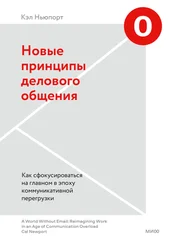Miller McPherson, Lynn Smith-Lovin, and James M. Cook, “Birds of a Feather: Homophily in Social Networks”, Annual Review of Sociology, no. 27 (2001): 415–444, http://aris.ss.uci.edu/~lin/52.pdf
Christian Jarrett, “We Sit Near People Who Look like Us”, BPS Research Digest (blog), July 18, 2011, http://bps-research-digest.blogspot.com/2011/07/we-sit-near-people-who-look-like-us.html
Наиболее сильные признаки гемофильности проявили ученики одной из самых элитарных частных школ Америки, что дает обильную пищу для разного рода теорий относительно американского правящего класса.
George Simmel, The Sociology of Georg Simmel, trans. and ed. Kurt H. Wolff (Glencoe, IL: Free Press, 1950).
Andreas Wimmer and Kevin Lewis, “Beyond and Below Racial Homophily: ERG Models of a Friendship Network Documented on Facebook”, American Journal of Sociology 116, no. 2 (September 2010): 583–642, http://www.sscnet.ucla.edu/soc/faculty/wimmer/WimmerLewis.pdf
Robert F. Worth, “In New York Tickets, Ghana Sees Orderly City”, New York Times, July 22, 2002, http://www.nytimes.com/2002/07/22/nyregion/in-new-york-tickets-ghana-sees-orderly-city.html. По горькой иронии, результатом статьи в New York Times, где рассказывалось о роли Ганы в парковочной системе Нью-Йорка, стала жесткая критика решения отдать эту деятельность на аутсорсинг, и контракт с ганскими работниками продлен не был.
“Op-Ed: An African Success Story”, New York Times, January 8, 2001, http://www.nytimes.com/2001/01/08/opinion/an-african-success-story.html
Peter Boyer, “Famine in Ethiopia”, Washington Journalism Review, January 1985, pp. 18–21.
William C. Adams, “Whose Lives Count? TV Coverage of Natural Disasters”, Journal of Communication 36 (Spring 1986): 113–22, http://www.gwu.edu/~pad/202/readings/disasters.html
Экономический крен в американских новостях может в ближайшее время усилиться, поскольку агентство Bloomberg и Wall Street Journal расширяют свои зарубежные офисы, в то время как большинство новостных бюро постепенно снижают свое заграничное присутствие.
Maxwell E. McCombs and Donald L. Shaw, “The Agenda-Setting Function of Mass Media”, Public Opinion Quarterly 36, no. 2 (Summer 1972): 176–87.
Ted Rall, “How the U. S. Media Marginalizes Dissent”, Al Jazeera, August 4, 2011, http://english.aljazeera.net/ indepth/opinion/2011/08 /20118164314283633.html
Jay Rosen, “Audience Atomization Overcome: Why the Internet Weakens the Authority of the Press”, PressThink (blog), January 12, 2009, http://archive.pressthink.org/2009/01/12/atomization.html
Chris Roberts, “Gatekeeping Theory: An Evolution” (paper presented at Association for Education in Journalism and Mass Communication, San Antonio, TX, August 2005), http://www.chrisrob.com/about/gatekeeping.pdf
Pamela Shoemaker and Tim P. Vos, Gatekeeping Theory (New York: Routledge, 2009), p. 16.
Dan Berkowitz, ed., Social Meanings of News (London: SAGE, 1997), p. 9.
MacBride commission, Many Voices, One World: Toward a New, More Just, and More Efficient World Information and Communication Order (Paris: UNESCO, 1980), p. 270.
Ibid., p. 263, rec. 47.
Ken Doctor, “The Newsonomics of WaPo’s reader dashboard 1.0”, Nieman Journalism Lab, April 7, 2011, http://www.niemanlab.org/2011/04/the-newsonomics-of-wapos-reader-dashboard-1–0
Michael Shapiro, “Six Degrees of Aggregation: How the Huffington Post Ate the Internet”, Columbia Journalism Review, May/June 2012, http://www.cjr.org/cover_story/six_degrees_of_aggregation.php?page=all; “Google Analytics and Google Apps Help The Huffington Post Keep Its Edge”, http://www.google.com/analytics/customers/case_study_huffngton_post.html
William Safire, Before the Fall: An Inside View of the Pre-Watergate White House (New Brunswick, NJ: Transaction Publishers, 2005), p. 392.
Diana Saluri Russo, “Is the Foreign News Bureau Part of the Past?”, Global Journalist, January 30, 2010, http://www.globaljournalist.org/stories/2010/01/30/is-the-foreign-news-bureau-part-of-the-past/
Jodi Enda, “Retreating from the World”, American Journalism Review, December/January 2011, http://www.ajr.org/article.asp?id=4985
“The Wall Street Journal under Rupert Murdoch”, Journalism.org, July 20, 2011, http://www.journalism.org/commentary_backgrounder/wall_street_journal_under_rupert_murdoch
Я спросил ведущего аналитика New York Times, не мог бы он поделиться сведениями о просмотрах международных материалов в сравнении с трафиком на местные новости. Он отказал вежливо, но твердо, пояснив, что издание не выдает такие сведения даже рекламодателям.
Elizabeth A. Thomson, “Freshman Publishing Experiment Offers Made-to-Order Newspapers”, MITnews, March 9, 1994, http://web.mit.edu/newsoffce/1994/newspaper-0309.html
Cass R. Sunstein, Infotopia: How Many Minds Produce Knowledge (New York: Oxford University Press, 2006), p. 188.
Eric Lawrence, John Side, and Henry Farrell, “Self-Segregation or Deliberation? Blog Readership, Participation, and Polarization in American Politics”, Department of Political Science, George Washington University, March 10, 2009, http://projects.iq.harvard.edu/cces/fles/ Lawrence_Sides_Farrell_Self-Segregation_or_Deliberation.pdf
Natalie Glance and Lada Adamic, “The Political Blogosphere and the 2004 U. S. Election: Divided They Blog”, Proceedings of the 3rd International Workshop on Link Discovery (2005): 36–43.
Eszter Hargittai et al., “Cross-ideological Discussions among Conservative and Liberal Bloggers”, Public Choice 134 (2008): 67–86.
John Horrigan, Kelly Garrett, and Paul Resnick, “The Internet and Democratic Debate”, Pew Internet and American Life Project, October 27, 2004, http://www.pewinternet.org/Reports/2004/The-Internet-and-Democratic-Debate.aspx
Mark Glaser, “Social Media Grows at NY Times, But Home Page Remains King”, MediaShift, January 13, 2011, http://www.pbs.org/media shift/2011/01 /social-media-grows-at-any-times-but-home-page-remains-king 013.html
Читать дальше
Конец ознакомительного отрывка
Купить книгу











